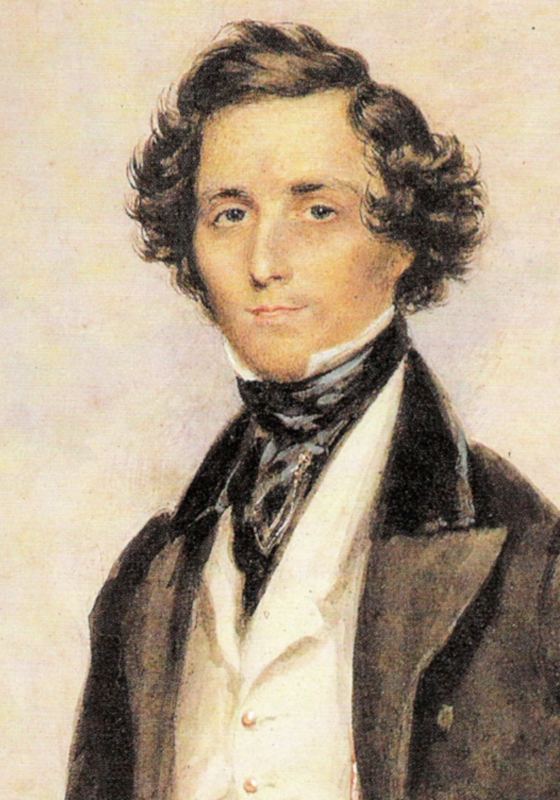 The 19th Century, Romantic Era composer Felix Mendelssohn, as the reader may know, was known as a staunch Lutheran – much like his protégé Johannes Brahms. Unlike Brahms, however (who was born into a Lutheran family), Mendelssohn was, like the 19th Century church historian Dr. Alfred Edersheim, an adult convert to Christianity from Judaism. Residing and composing in Leipzig – the home of Johann Sebastian Bach (who has been featured on Intrepid Lutherans on many occasions) – he was more than merely an important composer of the Romantic Era who happened to be a Lutheran. He was a key figure in the resurrection of appreciation for the works of Bach, which had been forgotten following the time of Frederick the Great of Prussia, with whom Bach valiantly contended for the sake of Christianity.
The 19th Century, Romantic Era composer Felix Mendelssohn, as the reader may know, was known as a staunch Lutheran – much like his protégé Johannes Brahms. Unlike Brahms, however (who was born into a Lutheran family), Mendelssohn was, like the 19th Century church historian Dr. Alfred Edersheim, an adult convert to Christianity from Judaism. Residing and composing in Leipzig – the home of Johann Sebastian Bach (who has been featured on Intrepid Lutherans on many occasions) – he was more than merely an important composer of the Romantic Era who happened to be a Lutheran. He was a key figure in the resurrection of appreciation for the works of Bach, which had been forgotten following the time of Frederick the Great of Prussia, with whom Bach valiantly contended for the sake of Christianity.Not only this, however, Mendelssohn became an ardent opponent of the extravagant Wagnerian philosophy of "Total Art," which, overtaking Europe for a time and eventually infecting America, required very expensive venues to house simultaneous lengthy performances of Ballet, Symphony and Opera, and was successful enough to cause such a drought in these individual genres as to threaten their existence.
In 1830, Felix Mendelssohn penned his Fifth Symphony, in honor of the 300th anniversary of the Presentation of the Augsburg Confession. Circumstances prevented its timely completion. It was finally published in 1868, twenty-one years after his death, during the peak of Wagnerian artistic philosophy and the consequent trough of the symphonic form itself. It was entitled, the Reformation Symphony. In a manner typical of the Romantic Era, the music was composed as a tonal representation of the struggle for the Truth of the Gospel throughout the Reformation, beginning with John Wycliffe – the "Morning Star of the Reformation" – and Jan Huss up through the German Reformation led by Dr. Martin Luther. It isn't until the latter third of the symphony that the Lutheran can recognize the triumphant strains of Luther's Reformation hymn, A Mighty Fortress.
More than a tonal representation of the Reformation, Mendelssohn's Reformation Symphony was singularly responsible for reviving the symphonic form throughout Europe and America, as well. With it's clearly Lutheran tonal imagery, it was instantly popular among European immigrants in America, most of whom settled in the midwest, and being a relatively short and simple composition, it was within the talent spectrum of the average German or Scandinavian immigrant, many of whom had acquired a superb education in Europe prior to their journey here, many more of whom had at least average if not advanced musical skill. In fact, many local and regional symphonies and music societies were created specifically to play this piece, and survived for many years thereafter, reviving the symphony and the musical arts not only in the midwest and America, but in Europe as well. Indeed, the popularity of Mendelssohn's Reformation Symphony in the 19th Century has been credited with felling Wagner's philosophy of "Total Art."
A fitting piece to spend a few minutes with this evening as we remember and celebrate the Reformation, this is a full recording of Mendelssohn's Symphony No. 5 in D major/D minor, Reformation Symphony, performed by the New York Philharmonic, and led by Leonard Bernstein.
Mendelssohn's Reformation Symphony
NY Philharmonic, Leonard Bernstein




